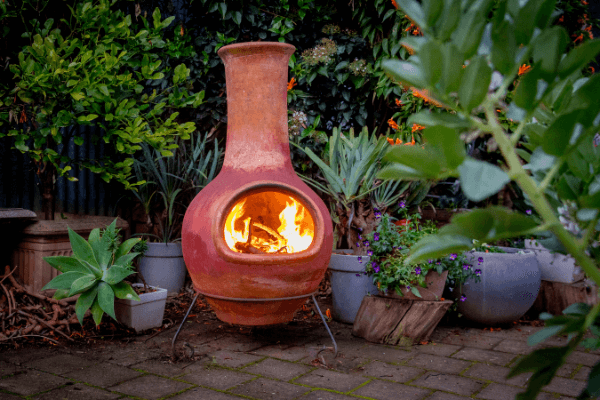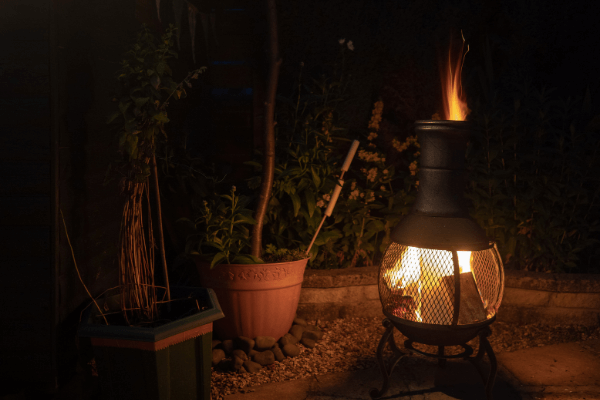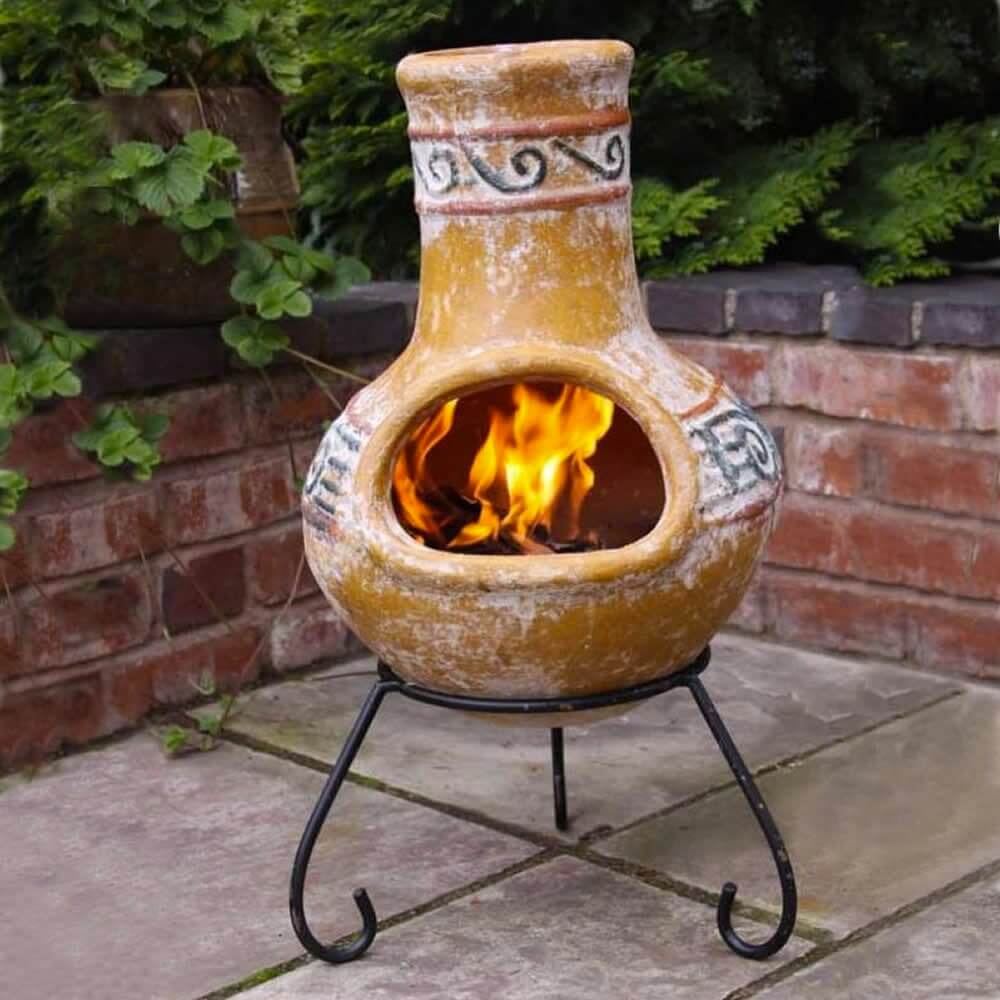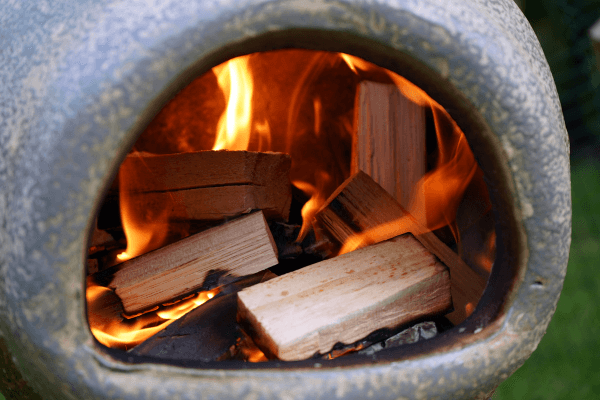- Home
- Chiminea Guide
Using A Chiminea
This post may contain affiliate links so I earn a commission.
Using a chiminea is easy if you follow a few basic steps.
But first, what is a chiminea, and how does it work?
Chimineas are hand-decorated fireplaces mainly used for cooking and heating.
They are not only unique, but they also have a beautiful appeal when you build or light fires in them.
They can add a lot of character and beauty to your backyard.
You’ll mostly find them sold at marketplaces and in patio stores.

There are many types of chimineas, mainly differentiated by the design, shape, and material used in making them.
But, whichever type you choose, make sure to use and properly install it for it to last longer.
They have recently become very popular in urban and rural settings, where they are a welcome addition to the patio or lawn.
Chimineas create a warm, interesting focal point for outdoor activities.
The chimineas originated centuries ago in Mexico from tribesmen, where they were used for baking bread and generating heat.
They were constructed from clay and mud, and they quickly became a very useful tool.
The popular chiminea can be found near gardens, patios, and decks throughout the United States and the United Kingdom.
Chiminea Construction
The traditional chimineas have a bulb-shaped, potbelly base, which rises to the chimney or neck.
Larger clay chimineas are generally constructed in two separate pieces: the base and the neck.
After construction, the base and neck are joined together, forming one seamless piece.
The joint between the base and the neck can be weak or fragile and could break.
So, never pick up a chiminea by holding on to the neck and the base, for that can put too much strain on the joint between the two pieces.
Although the traditional chimineas are constructed from clay, cast iron and cast aluminum models are now available.

Each of them has its advantages and disadvantages, so it is up to you to decide which one is most suitable.
Cast iron chimineas can last longer than those made from clay.
They are not easily broken and can be repainted if need be.
However, they are prone to rust, and their surfaces can be extremely hot, making them quite dangerous.
Clay chimineas are safer compared to metal chimineas since they don’t get that hot.
You can also repaint them if the paint wears off.
The only disadvantage is that they easily wear out and crack and thus require more maintenance.
As for the cast aluminum chiminea, they are light and safer to use just like the clay type.
Although they are not as durable as the metal ones, aluminum chimineas can actually last longer without cracking, unlike the clay type.
Chiminea Care
A chiminea can be fragile, and no matter how careful you are, it may break or crack.
To ensure the chiminea will give you years of warmth and satisfaction, it's important to maintain it properly.
A cover can be purchased to protect your chiminea from rain, ice, snow, and the blistering sun.
Also, be sure to cover the bottom of the chiminea with at least 3 inches of sand to protect it from cracking.

Find out how a chiminea cover could extend the life of your chiminea and prevent unwanted cracks, as well as the steps for properly maintaining a chiminea.
Is your clay chiminea kiln-dried, painted, and sealed, or has it only been air-dried and left untreated?
Knowing the difference and understanding how to treat your chiminea properly is essential.
What Are Some Of The Benefits Of Using A Chiminea?
A chiminea is known for creating a lot of heat from a small fire.
After all, the base of a chiminea is relatively small and can only handle small pieces of wood.
A chiminea is not designed to have a massive, roaring fire. Doing so may damage the unit.
Read here to find out the best types of chiminea wood and how to start a fire in a chiminea.
As with anything related to fire, dangers always exist. Read here for our chiminea safety tips.
Using A Chiminea Is Safer Than A Standard Fire Pit
Unlike the traditional fire pits, chimineas are less likely to produce sparks and hazardous flames.
The flames and sparks are usually directed out of the chiminea, resulting in a cleaner and more controlled fire or burn.
It has a stack and a fire bowl, which helps to keep smoke away from the chiminea.

Have A Wide Range Of Options To Choose From
As mentioned above, chimineas are different depending on the material used, the design, and the shape.
Therefore, you have a wide range of options to choose from, unlike fire pits that are limited in terms of materials.
Can Be Used Almost Anywhere
Chimineas are not easily flammable, and they hardly have sparks floating around.
That means they are safe and can be used in a variety of different locations.
You can install a spark arrester on the chiminea stack to ensure the sparks do not become flammable or dangerous.
Using A Chiminea - Overall
Whether you are using a chiminea for an occasional backyard gathering, like a patio heater, or just as a decorative piece, it can bring you years of enjoyment in almost any setting.
If you notice any cracks, you can replace it or do repairs. Note that you can only repair your chiminea if the damage is minor.
Generally, using a chiminea is relatively easy.
However, you still need to be careful when handling it.
For example, only start small, manageable fires, keep them covered, and make sure to keep them indoors during harsh weather conditions.
As long as you take good care of your chiminea, it can last a long time.

About the Author
Obsessed with firewood, Nick is behind over 350+ of Firewood For Life's articles, as well as countless reviews, guides and YouTube videos to help readers like you reduce heating costs and create the perfect fire.


